A Note from Music Director James Conlon
"It is a riddle, wrapped in a mystery inside an enigma.” - Winston Churchill, 1939
There is one overwhelming reason, in my opinion, for performing Giacomo Puccini's Turandot, his final opera: the magnificent music of Italy's last great operatic composer, created at the height of his maturity and technical mastery.
The plot's central dramatic moment is the life and death confrontation between the Princess Turandot and the Unknown Prince. Her three riddles—enigmas in the classical tradition of Ancient Greece—must be correctly answered for the prince to escape execution, and to win the icy, remote princess's heart (and eventually share her throne).
The premiere of Puccini's work, unfinished at his death, was barely 13 years in the past when Churchill made his famous commentary (describing Russia) quoted above. It could very well serve as a guide through not so much the plot of Turandot, but the very nature of Puccini's composition. The incomplete work poses more questions than answers as to what it really is. One of those vexing questions (never to be fully resolved) is a very basic one: how to pronounce the title (with or without the final T).
Taking the large view of Puccini's long artistic development, we see it as yet another of his creative attempts to challenge his own powers, and that of operatic theater. That it differs so much from earlier works reveals a contradiction: if we look retrospectively, we can see how those differences are the consequences of the composer’s constant growth. The opera also reflects a stylistic predilection of the time: an aesthetic and compositional fascination with “exoticism,” which had deep roots in 19th-century European arts. By 1920, Puccini, who was an internationalist in his tastes, had absorbed the music of Debussy, Stravinsky and, although it was not to his liking, even Schönberg. Turandot opens the way above all to new possibilities for harmonic invention. If it feels reductive, at the distance of a century, it must be understood that it is the China of fairy tales, seen and heard through European eyes and ears.
Puccini did not live to complete the opera, which left two major problems to solve: primarily, how and by whom would it be completed for performance (the answer would be the enlistment of a younger composer, Franco Alfano) and secondarily, even more troubling, how to deal with a work of which an important part of the composer's process was never to materialize. After completing his previous operas, he would characteristically go back and begin a long, laborious process of editing, criticizing and revising, agonizing over both forest and trees.
As a not fully realized final product, Turandot remains imperfect in many respects. It is one of several indisputably great compositions that were never completed. In some of these cases, we don’t actually know why the composer never did finish them. Works in this category include Mozart's C Minor Mass and Schubert's Symphony No. 8 (the “Unfinished Symphony”). In other instances, as in Puccini's case, the premature emptying of life’s hourglass precluded their competition by the composer. Examples of these include Mozart’s Requiem, Mussorgsky's Khovanshchina, Berg's Lulu, Zemlinsky's King Kandaulus, Schönberg's Moses and Aron and Mahler's Tenth Symphony.
The mystery, hearkening back to the trio of adjectives to which I refer in the title of this essay, is to know what Puccini would have done had he lived, not just with the ending, but with the totality of the work after he had put it through his customary editing process.
Puccini went out of part of his comfort zone, the very human stories of, as he himself described it, "the tragedy of little souls." He had created his most perfect works coming out of the "verismo" influence, portraying real life and real, usually nonheroic people. His "middle-period masterpieces" La Bohème, Tosca and Madame Butterfly, to (mis)-appropriate the term from Verdian operas, were followed by a constant quest of renewal of form and style, The Girl of the Golden West, La Rondine (a quasi-operetta,) Il Trittico (The Triptych, three distinct operas in one evening) and finally with Turandot, an opera vastly different from all of its predecessors in scope, intent, substance and form. Turandot was an enormous experiment, for which the composer did not live to see the results.
In his unending search for new forms, Puccini never stopped searching and expanding. Turandot was the largest test trial (no pun on the plot) he had ever attempted. It is a fairy tale largely drawn from the 18th-century Venetian playwright Carlo Gozzi, which itself drew from a variety of sources, largely (but not exclusively) Persian via France and Prussia (including Schiller and Goethe) but was not Chinese. Gozzi's comedy— note carefully, a comedy(!)—is an important strain of the commedia dell'arte tradition, combined with a fairy-tale prince and princess for popular consumption. Its original goals were rather close to Mozart's Singspiel, a "rescue" opera with nobles and common folk who walk in and out of a dramatic presentation, provoking the audience's laughter along the way. The three ministers of Puccini's Turandot are absolutely and purposefully descended from the "masks" of the Venetian commedia dell'arte, Carlo Gozzi and his arch-rival Carlo Goldoni.
The resulting "monumental" type of opera, unique in Puccini's output, looks both backward to the early 19th-century opera of "number" operas, which presents a series of set solo and choral pieces, and forward to the stylization and neoclassicism of the 1920s (for instance Igor Stravinsky's Oedipus Rex, with an almost symphonic structure). Unintentionally, as the newly created art form of cinema was beginning to become the preeminent form of popular theater in the 20th century, Turandot's grandiosity and massive dimensions were an early precursor to Hollywood and the era of Cecil B. DeMille.
Puccini's focus, it seems, was far more on form, both theatrical and musical, a form that was new and different for him. In a certain sense the form determined the substance. Emperor, Princess, and Unknown Prince are as new to Puccini as were the three comedic ministers.
The opera seems to have been pre-destined to end, not with the closure on the fairy tale-like "triumphant happy ending" that we know, but with the death of the only classically Puccinian character: that of the enslaved woman Liù. Puccini developed her character from a very different character in the original source material. Liu's expanded presence, though she is entirely dispensable in the large canvas of the plot, seems to have been a personal dedication to a young woman who had worked for the Puccini family, and whose tragic suicide weighed heavily on the composer.
In a poignant irony, it was at the suicide of Liù, the only character who deeply wins our sympathy in Puccini's accustomed manner, that conductor Arturo Toscanini interrupted the world premiere with the words "here the master laid down his pen.”
And so it seems, in retrospect, with Liù's and Puccini's death, that the tradition of Italian operatic melodrama as a compositional form had reached its zenith. From its Renaissance Florentine roots, through the following centuries, it culminated with its two giants Giuseppe Verdi and Giacomo Puccini. Their works were ultimately unsurpassable, and that tradition was to pass into history, no longer as a model to be followed but a treasure to be preserved as one of Western Europe's monumental cultural achievements.




